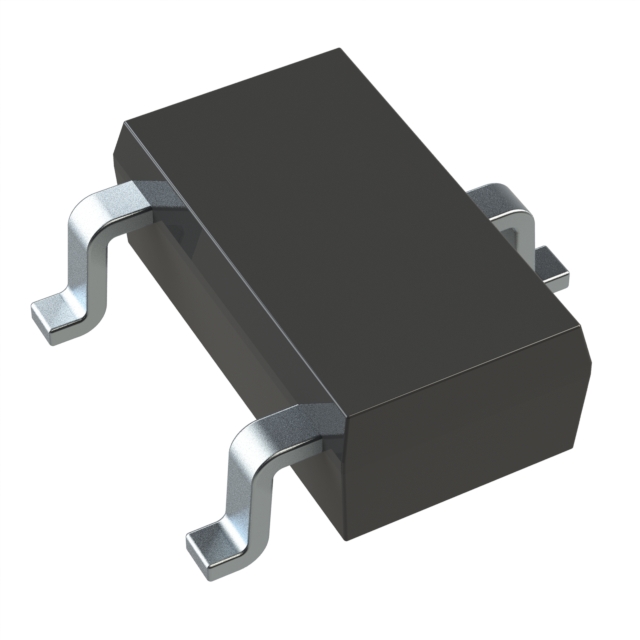Teardown Ion Party Bot Micro
2017-08-07 | By All About Circuits
License: See Original Project
Courtesy of All About Circuits
In this teardown, we dissect the Ion Party Bot Micro and examine its internal components.
At a Glance
The Ion Party Bot Micro is a party-ready bot (robot) that dances, moves, and spins! This motorized Bluetooth party speaker offers the following features:
- A motorized wheel base (for spinning and moving).
- A Bluetooth speaker for connecting to your Bluetooth capable device.
- A 3.5mm auxiliary input for use with non-Bluetooth devices.
- A rechargeable lithium-ion battery.
- Control buttons.
- The Bluetooth, lights, and motor can all be turned on/off separately.
Ion Party Bot Micro packaging (front and back)
Ion Party Bot Micro device (front and back)
Removing the Motorized Wheel Base
The motorized wheel base has four wheels:
- Two of the wheels are free-spinning
- The remaining two wheels share an axle of which is motorized. Also, this axle is able to spin, which allows the bot to change its direction.
Motorized wheel base
This base was easily detached from the bot's body by removing the three screws. Once removed, we can see the electronics contained within the base (see Figure 4 below).
Electronics contained inside the motorized wheel base
As can be seen, the electronics contained within the wheelbase consist of one very simple (red) PCB, two cables, and a DC motor.
The red PCB (see Figure 5 below) contains a toroid inductor and two through-hole connectors. The toroid inductor is placed in-series—both power and return—with the DC motor. The purpose of this inductor is to limit the in-rush current to the motor and also to provide EMI filtering for the potentially noisy/chopping motor current.
Motorized wheel base PCB with a toroid inductor
Inside the Bot's Body
The bot's body splits open after removing four screws (Figure 6). All the electronics, except for the LED PCB, are contained in one half of the body. These electronics consist of the following:
- A relatively large speaker (appears to be of reasonably high quality)
- A battery (Li-Ion rechargeable)
- A PCB containing the intelligence of the bot.
- A few power cables
- An antenna
Inside the Bot's body
All of the electrical internal components, once removed from the bot's body, can be seen in Figure 7 below.
The bot's internal electronics
A Closer Examination
The battery is an 803040 lithium-polymer battery which has an energy rating of 1000mAh with a voltage rating of 3.7V. As can be seen in Figure 8 below, this battery comes with an on-board PCB (for recharging the battery) which contains the following components:
- Dual N-Channel Enhancement Mode Power MOSFET (FS8205A)
- Battery Protection IC (G3JT)
- Passive components (two resistors and one capacitor)
803040 lithium-polymer battery
The LED PCB (Figure 9 below) is a high-quality two-layer (top and bottom) board. It contains three independent circuits for driving the three LEDs. At first glance, I thought the three ICs (all with the same IC marking of BHD) were voltage regulators. However, based on their silkscreen reference designators of "Q", they appear to be FET/transistors which work like switches to turn ON/OFF the LEDs.
LEDs PCB (top and bottom)
The LEDs themselves have no markings and appear to be high-energy devices because they each use the PCB's ground plane and TIM (thermal interface material) for dissipating heat. See Figure 10 below.
LEDs use TIM and PCB's ground plane for heat dissipation
The "intelligence" PCB contains the remaining electrical components. Similar to the LED PCB, this PCB is also a two-layer board—it's usually always best, from a cost-savings perspective, to minimize PCB layers.
The EMI metal shield box serves as a countermeasure for EMI. As can be seen in Figure 11 below, the metal box is secured to the PCB—on all four sides—using solder.
- The Bluetooth module appears to be an OTS (off the shelf) 3rd party device. This module is connected/soldered to the PCB using castellated vias/holes.
- The EEPROM is a 2-wire device. As can be seen, it has been marked using pink dots. Marking such devices in this fashion is an industry standard for communicating that the programmable IC has been programmed with custom firmware.
- The voltage regulator (IC marking 662K) is advertised as being a low-power and high-precision device.
Bottom-side of "intelligence" PCB. With and without the EMI metal shield box installed
The top-side of the "intelligence" PCB (see Figure 12 below) contains the following components:
- High-capacitance capacitors: These particular capacitors are known as vertical chip devices. They are fairly high in capacitance (100uF), are rated at 16V, and are of type aluminum electrolytic SMDs (surface mount devices).
- The HT6879 audio amplifier is used in conjunction with the speaker. According to its description, it's a 3.5W mono class D audio power amplifier with digital volume control and low EMI.
- The NJM062 op-amps (operational amplifiers) are J-FETS designed as low-power devices with high-input impedance, a wide bandwidth, a high slew rate, and low input offset and bias current.
- ST Microprocessor, STM8S003F3P6. This device serves as the brains of the system. It has features including 3 timers, 8 Kbytes Flash, 128 bytes of EEPROM, and a 10-bit successive approximation ADC (analog to digital converter).
Top-side of the "intelligence" PCB
Summary
Although this Ion Party Bot Micro is a rather simple design, it appears to be both well designed and well constructed/manufactured. And even though the manufacturer uses cost-reducing methods, such as using two-layer PCBs and keeping the design uncomplicated, I don't see the cutting of corners to save cost at the sacrifice of quality.










